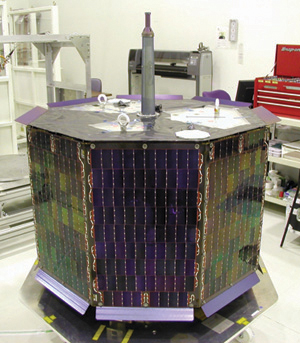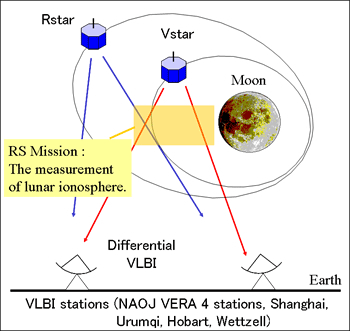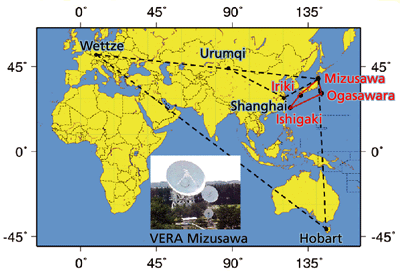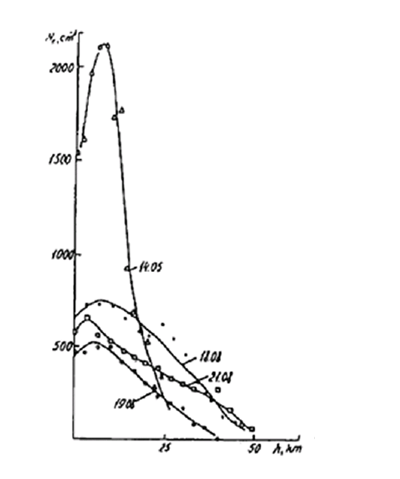The gravity field tells us whether massive matters are included or not under the soil. Information of the evolution of the Moon will be obtained by measuring the distribution of gravity fields.
RS(Radio Science)
It is still under the debate whether the ionosphere exists on the Moon or not because of the shortage of data. The lunar ionosphere will be probed with RS by measuring the frequency change due to the passage of radio waves in the ionosphere.

Overview of Relay satellite
| Dimension | 1m x 1m x 0.65m |
|---|---|
| Mass | 45kg |
| Power | 70W |
The configurations of satellites and antennas
RS
Radio waves from the Vstar which travel very near to the lunar limb are received at Usuda for the measurement of lunar ionosphere.

VRAD: Differential VLBI observation of radio sources
RS: Observation of the lunar ionosphere

Location of VLBI
ground stations
ground stations

Electron density profiles obtained in Luna 19 and 22 missions by the former Soviet Union. KAGUYA RS will reveal how this electron layer is formed.
RS 

Takeshi Imamura
Department of Basic Space Science,
JAXA/ISAS